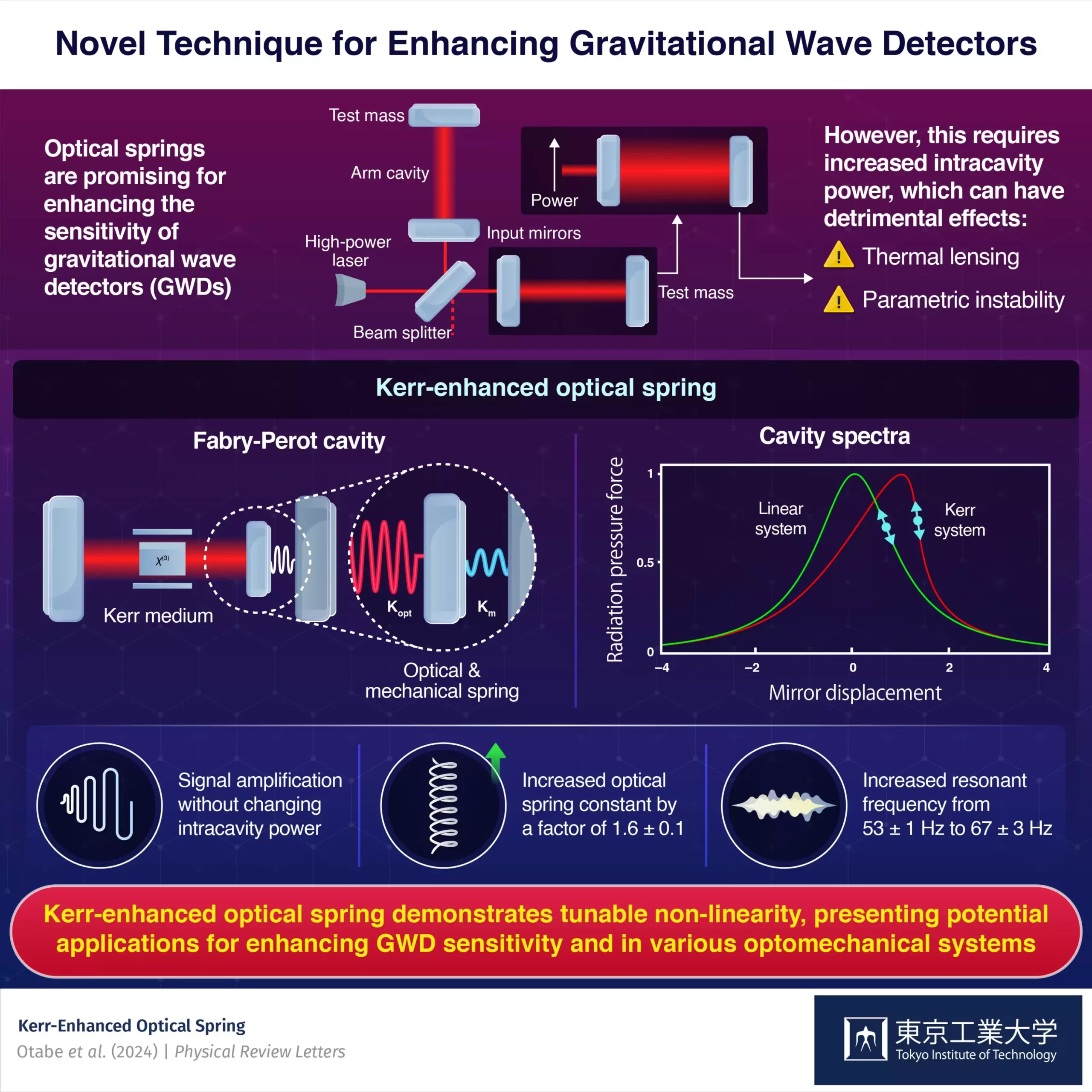The detection of gravitational waves has been a revolutionary breakthrough in modern physics, providing essential insights into the universe. In 2017, the detection of gravitational waves from the merger of a binary neutron star marked a significant milestone in astrophysics. However, the detection of gravitational waves from post-merger remnants has proven to be challenging due to limitations in current gravitational wave detectors (GWDs).
Despite the crucial information that post-merger gravitational waves can provide about neutron stars and the universe, their detection has remained elusive. The frequency range of these waves falls outside the capabilities of existing GWDs, necessitating the development of next-generation detectors with enhanced sensitivity.
One promising method to enhance the sensitivity of GWDs is through signal amplification using optical springs. Unlike traditional mechanical springs, optical springs utilize radiation pressure force from light to mimic spring-like behavior. The stiffness of optical springs is determined by the power of light within the optical cavity, making it a key parameter in enhancing the resonant frequency of these systems.
A team of researchers from Japan, led by Associate Professor Kentaro Somiya and Dr. Sotatsu Otabe, has developed a groundbreaking solution to enhance the impact of optical springs without increasing intracavity power. By introducing a Kerr medium into a Fabry-Perot type optomechanical cavity, the researchers induced an optical Kerr effect that changed the refractive index of the medium, resulting in a significant enhancement of the optical spring constant.
The experiments conducted by the research team demonstrated that the optical Kerr effect successfully increased the optical spring constant by a factor of 1.6, leading to a substantial improvement in the resonant frequency of the optical spring. With further refinement of technical issues, the researchers anticipate an even larger signal amplification ratio, highlighting the potential impact of Kerr-enhanced optical springs in advancing not only GWDs but also other optomechanical systems.
The development of Kerr-enhanced optical springs represents a significant advancement in the field of gravitational wave detection and optomechanical systems. By harnessing the unique properties of the optical Kerr effect, researchers have unlocked a new avenue for enhancing the sensitivity and performance of GWDs, paving the way for a deeper understanding of the mysteries of the universe. The innovative design of Kerr-enhanced optical springs showcases the potential of integrating cutting-edge technology to push the boundaries of scientific exploration.


Leave a Reply